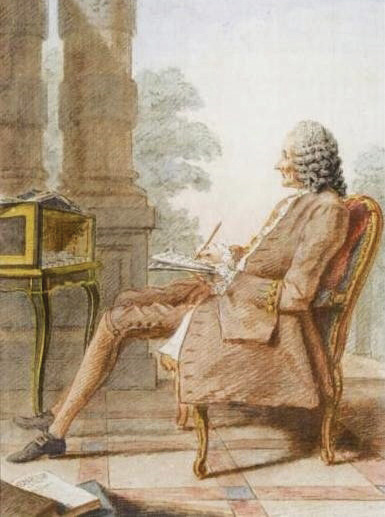Composed c.1729-30; 29 minutes
Throughout his career, Rameau wrote short harpsichord pieces which he grouped into suites. For many years after his death, performances of these 50 or so keyboard works were chiefly responsible for keeping his name alive, while, in the past 75 years, revivals of his 30 or so operas have re-established Rameau’s high place among composers of French opera. The first keyboard collection, Premier livre de pièces de clavecin, appeared in 1706. Another collection was published in 1724, together with a Méthode for harpsichord technique. Then, five or six years later, Rameau introduced a third anthology where the various dance movements are grouped together into two Suites.
The G major/minor Suite from this collection includes primarily descriptive pieces. The first, Les tricotets is a jaunty rondeau with changing time signatures, said to be based on a dance where the feet moved as fast as a person knitting. L’indifférente is a character piece of a lady with ‘attitude.’ A pair of minuets follows. Then comes La poule, Rameau’s well-known representation of a hen clucking. Les triolets, highly decorated and flowing, is said to mirror a medieval French verse form with a recurring refrain. In Les sauvages, Rameau catches the French love of musical exotica when he portrays two indigenous people from distant Louisiana whom he saw dance at a Paris fair in 1727. L’enharmonique brings Rameau the theorist to the fore, with the grace and imagination of Rameau the great composer. Finally, L’egiptienne is inspired not by the deft dancing of an Egyptian, but of a no less exotic young Roma woman.
 In 18th century France, Jean-Philippe Rameau was renowned as a music theorist and opera composer with a reputation, too, as an organist. He was “lean and scraggy, with more the air of a ghost than a man,” by one account; “like a long organ pipe,” “with legs like flutes,” by others. Rameau did not endear himself to his colleagues; his prickly character and keen intellect frequently provoked argument. Remarkably, he was 50 before his first stage work, Hippolyte et Aricie, was publicly performed, beginning a new era in French opera.
In 18th century France, Jean-Philippe Rameau was renowned as a music theorist and opera composer with a reputation, too, as an organist. He was “lean and scraggy, with more the air of a ghost than a man,” by one account; “like a long organ pipe,” “with legs like flutes,” by others. Rameau did not endear himself to his colleagues; his prickly character and keen intellect frequently provoked argument. Remarkably, he was 50 before his first stage work, Hippolyte et Aricie, was publicly performed, beginning a new era in French opera.